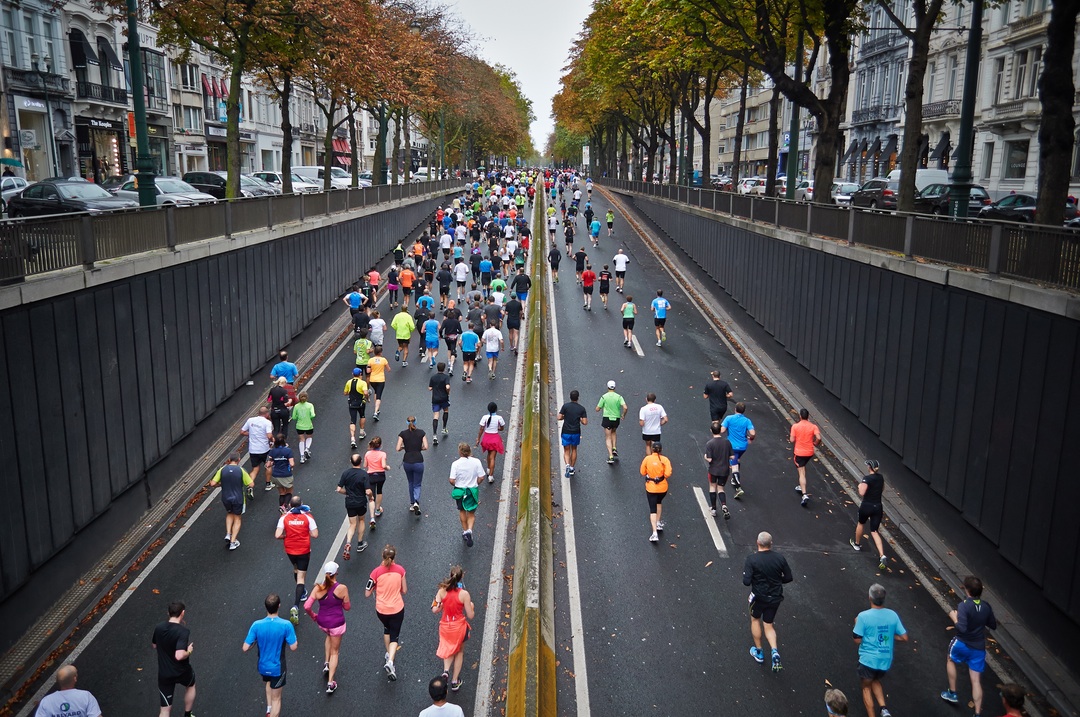For those who don’t know a marathon is defined by Webster dictionary as a “long-distance race” usually 26.2 miles. However, the Olympic marathon distance was originally 24.8 miles. The distance was based on the Greek legend of Pheidippides, a Greek foot soldier, who was sent from Marathon to Athens (24.8 miles) to proclaim the victory over the Persian Army. The 26.2 didn’t appear until the 1908 Olympic Games in London when King Edward VII and Queen Alexandria wanted the race to start at the Windsor Castle so the royal family could view the start. The distance between the start at the castle and the finish line at the Olympic Stadium in London proved to be 26 miles. The extra .385 was added so the runners would finish in front of the king and queen, hence 26 miles and .385 yards (26.2 miles). Since 1908, every Olympic marathon run has been 26.2 miles.
I myself have never run a marathon. However, I have had the privilege of training with and watching a close friend run marathons. This year I was able to see her run in the 117th Boston Marathon. The day for us started at 6:00am when we left her at Hopkinton State Park to ride the shuttle to athlete’s village where all of the runners convene before the race. As I drove into Boston we were able to see the swarm of buses driving thousands of runners to the start line. We entered Boston around 7:00am and were at the finish line by 8am. We walked around and saw the lines of food, beverages, warming blankets and medals that would be handed to the runners as they crossed the finish line. We stood in front of the finish area and thought in a few hours thousands of runners would be crossing here. By 10:00am Boylston Street was already packed with spectators and for the next several hours I would wait for my friend’s arrival. Wheelchair competitors took off at 9:17, followed by the elite woman, elite men and then corrals of runners based on their qualifying times and projected finish times. I had the experience of seeing some of the fastest runners cross the finish line (2:09:22 pace of 4:58/mile). This race attracts runners from all over the world. The race is notorious for its downhill start, the screaming woman of Wellesley College and the infamous hills of Newton (Heartbreak Hill) mile 16-22. It was an extraordinary experience just being a spectator at this famous race.
Boston Marathon Facts
- The world’s oldest annually contested marathon!
- First Boston Marathon was on April 19, 1897, with a measured distance of 24.5 miles and had a 15 member starting field. The race was inspired by the spirit and majesty of the Olympic Marathon.
- In 1924 the course lengthened to 26.2 (the Olympic standard).
- From 1897-1968, the Boston Marathon was held on Patriots Day, April 19 to commemorate the start of the Revolutionary War. However in 1969, the holiday (which is only recognized in Massachusetts and Maine) was officially moved to the third Monday in April and the race has been held on a Monday ever since.
- In 1966 the first woman, Roberta Gibb ran the full Boston Marathon. However, she did not run with an official number and she hid in the bushes near the start until the race began.
- In 1972 woman were officially allowed to run the Boston Marathon, eight women started and all eight finished.
- 1996 marked the 100th year of the Boston Marathon. It attracted 38,708 entrants (35,868 finishers) the largest field of finishers for the race.
- In 2012 weather conditions reached almost 90 degrees and the 500,000th finisher in the 116 year history of the race crossed the finish line.
- In 2013 two bombs were set off at the finish line killing at least 3 people and injuring over 170.
I had started writing this piece long before the tragic events took place at the 117th Boston Marathon. It’s unfortunate that a legendary race that has challenged, inspired and rewarded many runners for more than a century was turned into a tragic event this year. On April 15, 2013 I witnessed horror strike the streets of Boston but I also saw that in a time of great distress extreme acts of kindness and heroism. My thoughts and prayers go out to everyone affected by this event.
If you or anyone you know is having trouble coping after a disaster visit https://www.samhsa.gov/homelessness-programs-resources/hpr-resources/trauma for helpful resources or call the SAMHSA Disaster Distress Helpline 1-800-985-5990 or text “TalkWithUs” to 66746.


